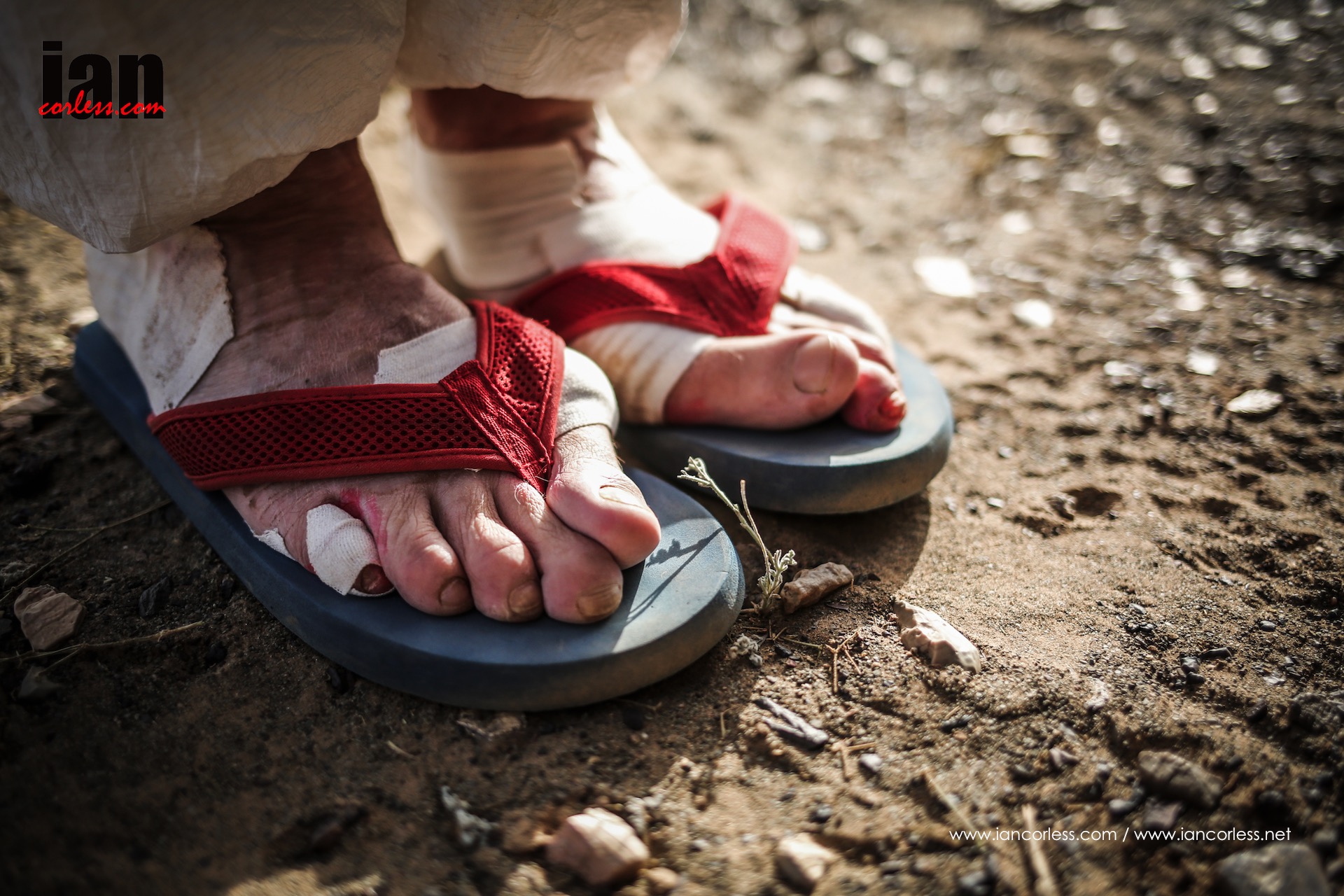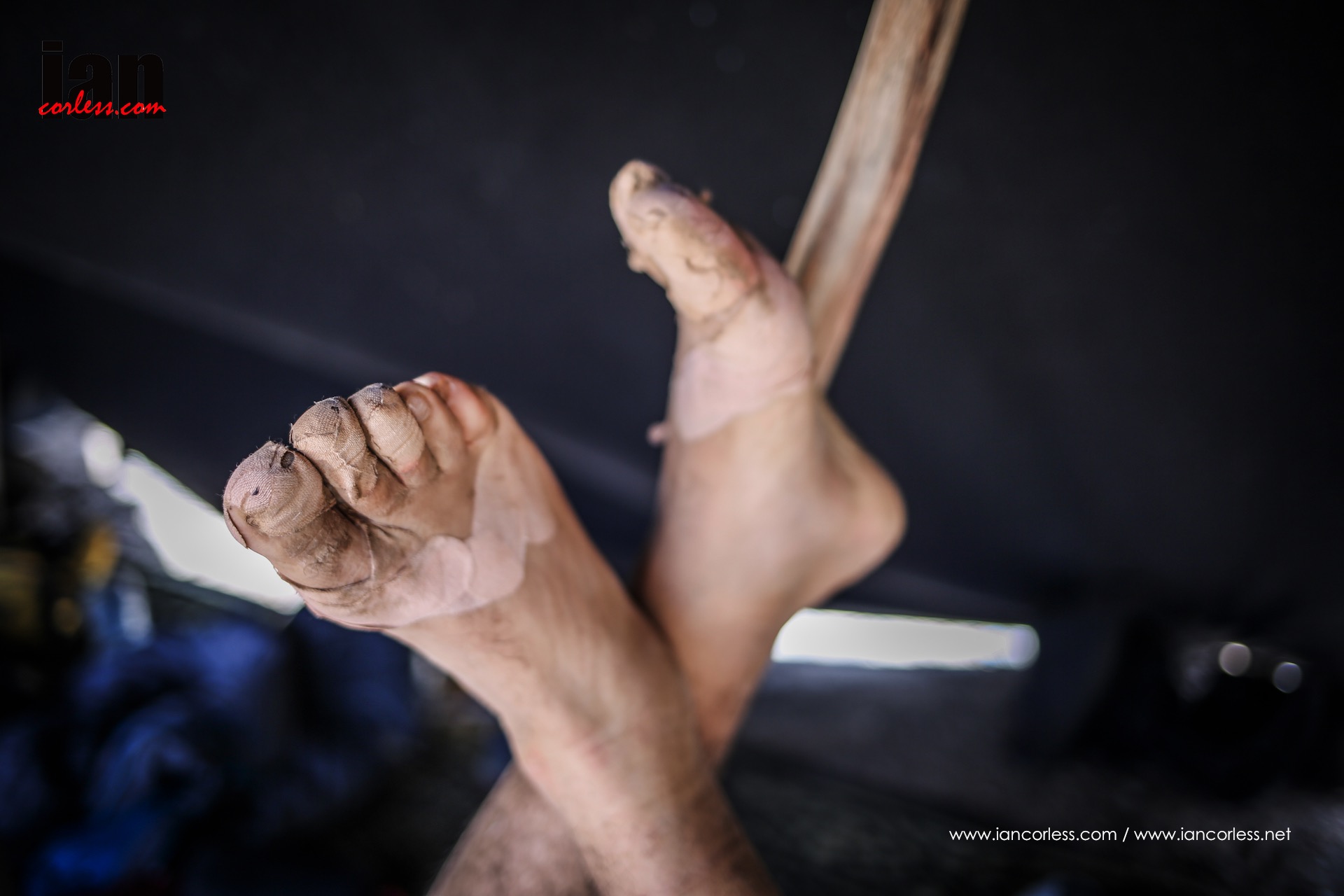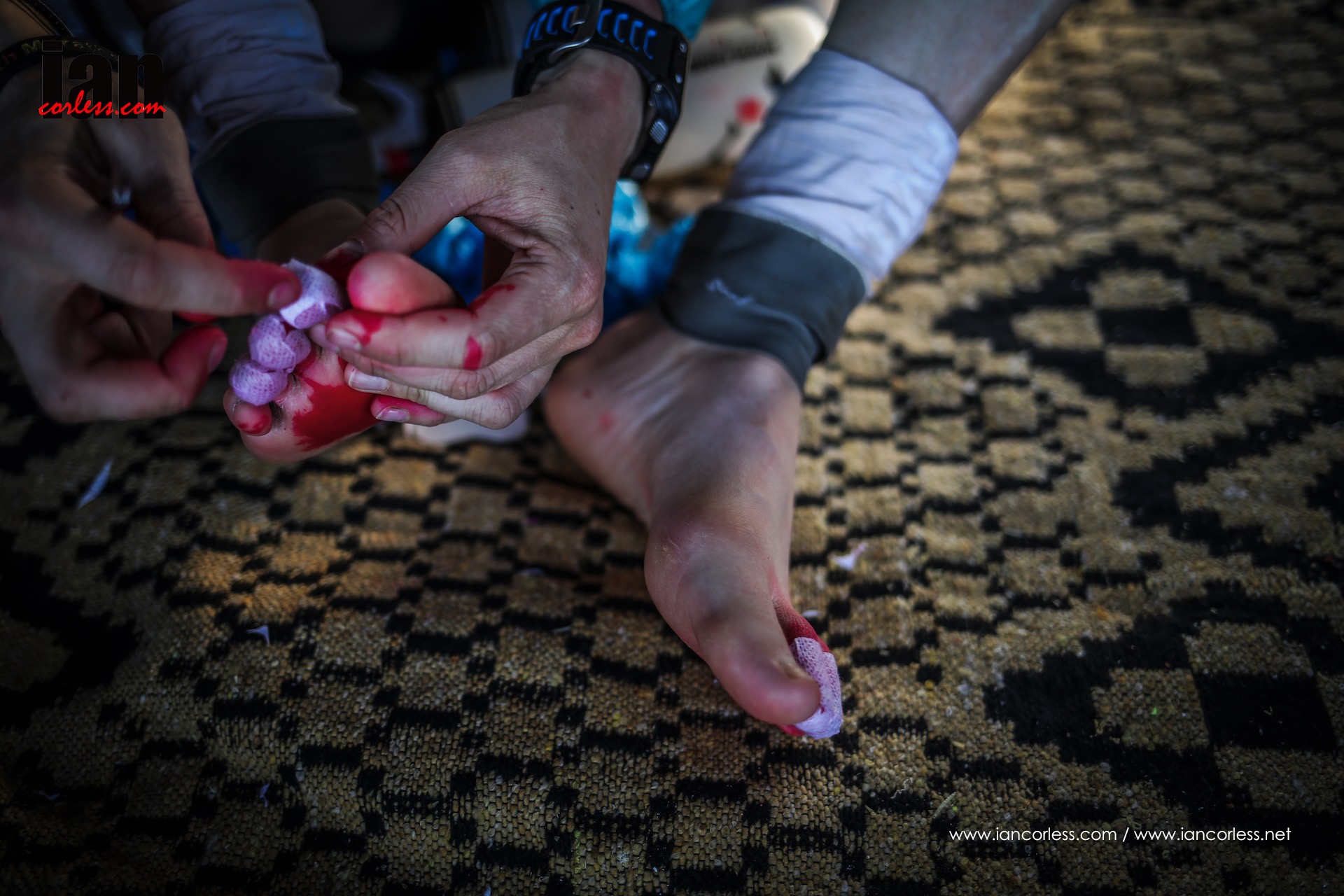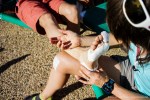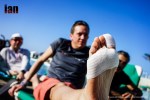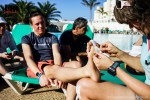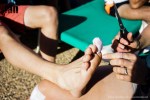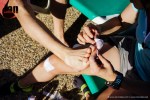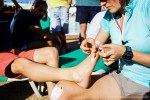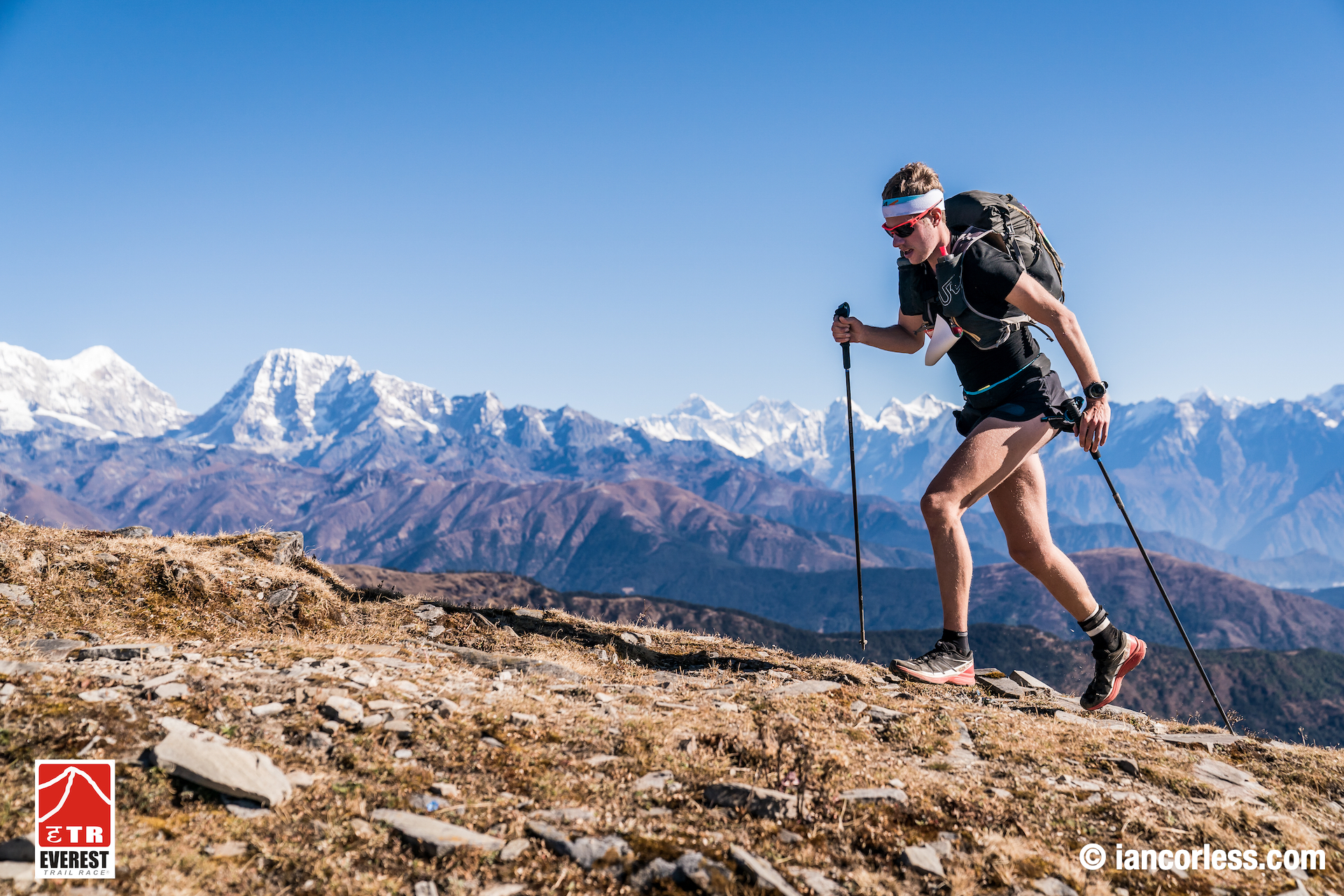 Running is running yes? Anyone can do it! Well I guess the answer is yes. However, variables come in to play. Running is broken down into many different distances, from 100m to 100-miles and beyond. The longer we run, the more the challenges and requirements on a runner change. Running for multiple days or running a multistage race on mixed terrain throws up many different scenarios. Over the years I have spoken with many champions who have raced in the sands of the Sahara, the forests of Costa Rica and the mountainous paths of Nepal. They all provide me with similar hints ’n’ tips to a successful multistage race.
Running is running yes? Anyone can do it! Well I guess the answer is yes. However, variables come in to play. Running is broken down into many different distances, from 100m to 100-miles and beyond. The longer we run, the more the challenges and requirements on a runner change. Running for multiple days or running a multistage race on mixed terrain throws up many different scenarios. Over the years I have spoken with many champions who have raced in the sands of the Sahara, the forests of Costa Rica and the mountainous paths of Nepal. They all provide me with similar hints ’n’ tips to a successful multistage race.
TOP 10 TIPS FOR A MULTISTAGE
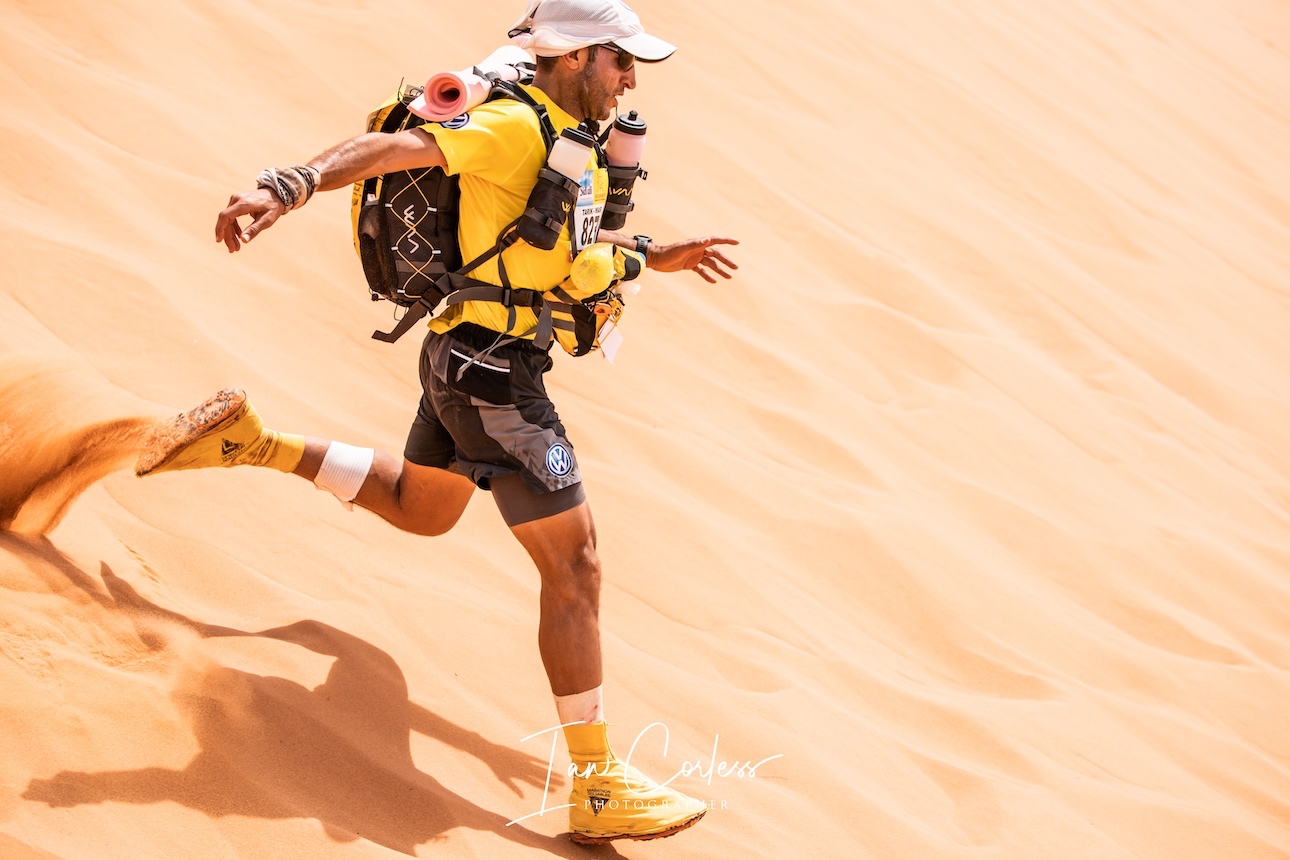
1 – RUNNING IN THE SAND
Desert races are very popular. Marathon des Sables for example is the father of multistage racing and over the years, many races have followed in the MDS format. A desert race is never all dunes but some races have more soft sand than others, so, be prepared. To avoid getting tired it’s important to read the terrain. Carve your own path running on fresh sand and when possible, run along the ridges. In smaller dunes (dunettes) it can be beneficial to run in tracks left by others, at all times, run light as though running on ice – you don’t want to sink in the sand!

2 – HYDRATION
Dehydration is a real risk in any race, particularly a self-sufficient race where water is rationed. The risks of dehydration increase when the mercury rises and a lack of cover comes. A desert for example will be open, have intense heat but humidity will be low. By contrast, a jungle such as those found in Costa Rica may well have plenty of tree cover and streams to cool off in but the humidity will be through the roof. In both scenarios it’s important to drink regularly. Take small and regular sips of water and supplement lost salt with salt tablets. Races like Marathon des Sables provide salt tablets at aid stations and they recommend dosage. Other races you will need to think of this and plan accordingly. Also think about food choices on the trail and when in camp – food rich in minerals and salts will also help you. Importantly, multistage racing is about management from day-to-day and this is what can trip people up. Think about the event as a whole and make sure you recover after each day – rehydrating is as important post a run as when running.
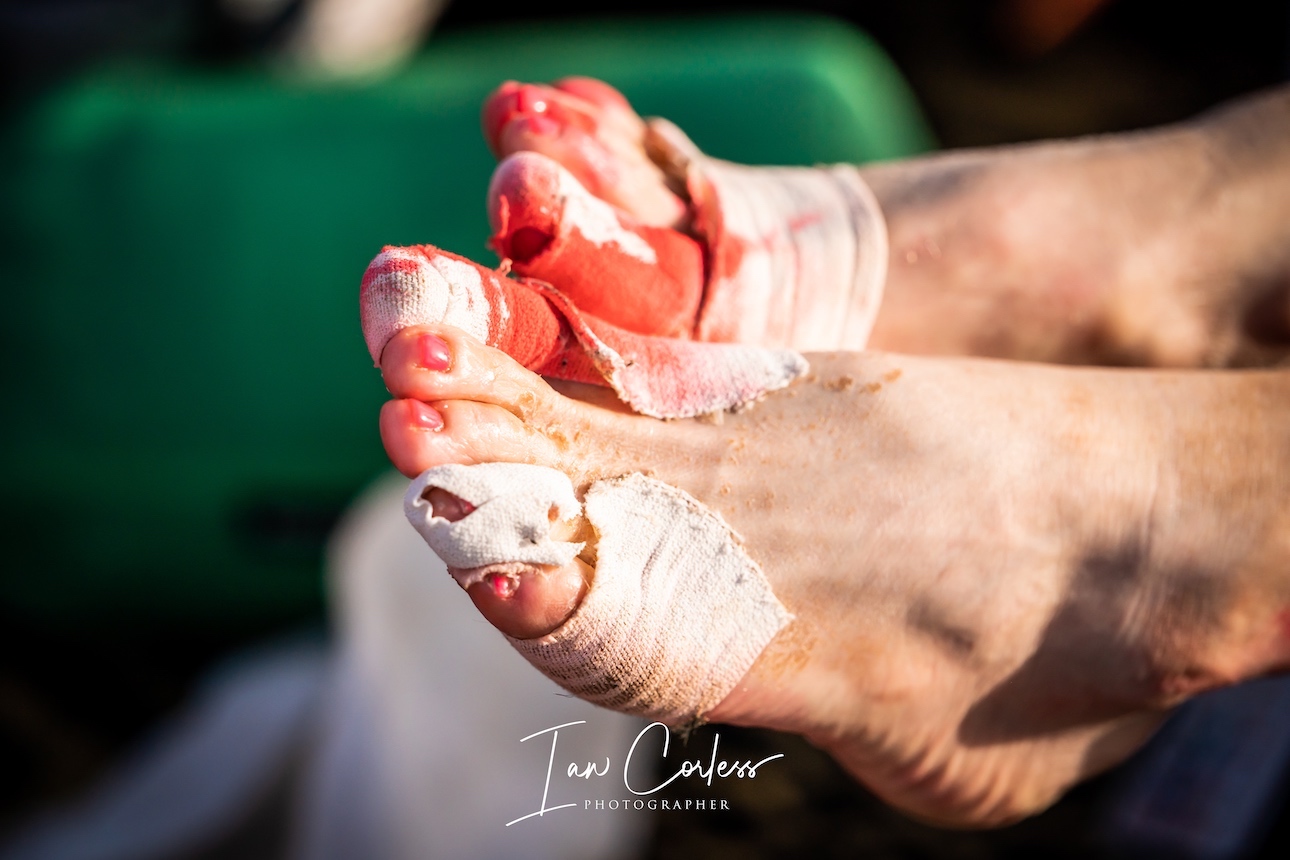
3 – BLISTERS
Many a multistage race is ruined by bad personal management of feet. Think about this well in advance of the race by choosing socks and shoes that work for you. Also choose shoes appropriate for the terrain you will be racing on. A shoe for MDS will be very different to a shoe for the Himalayas for example. By all means take advice on shoes from previous competitors BUT you are unique and your needs are unique. Do you pronate? Do you supinate? Do you need a low or high drop? Do you prefer a cushioned shoe or a more minimalist shoe? What about grip, do you need any? Do you need to fit gaiters? The questions can go on and on and only you can make a choice. If all this is new to you. Go to a running store that understand runners and can provide expert and impartial advice. They will assess you and your run style and provide advice. One consideration for multistage racing is that your foot ‘can’ possibly swell due to variables such as heat, running day-after-day and so on. Your foot will not go longer, but it may go wider. So, think about shoes that have some room in the toe box. Don’t purchase shoes that are 1 or 2 sizes larger – this is poor advice. Larger shoes will only allow your foot to move… a moving foot causes friction, friction increases the risk of soreness and soreness will lead to a blister. Also think about walking. Many people choose a shoe because they are good to run in… But how do they feel when you walk? Remember, a multistage race can involve a great deal of walking!
Do you have sensitive feet? If so, you can prepare your feet in the run-up to an event. Also make sure your nails are trimmed back. While racing, if you have blisters, stop and get them treated as soon as possible. Take responsibility and learn basic footsore before an event. You need to make sure you can make any necessary treatments. Finally, many races have a medical team that are provided to look after you and your feet. Don’t hesitate to use them, but remember, there may be a big line waiting. Self-care is an excellent way to make sure that you are ready to run in your own timeline.
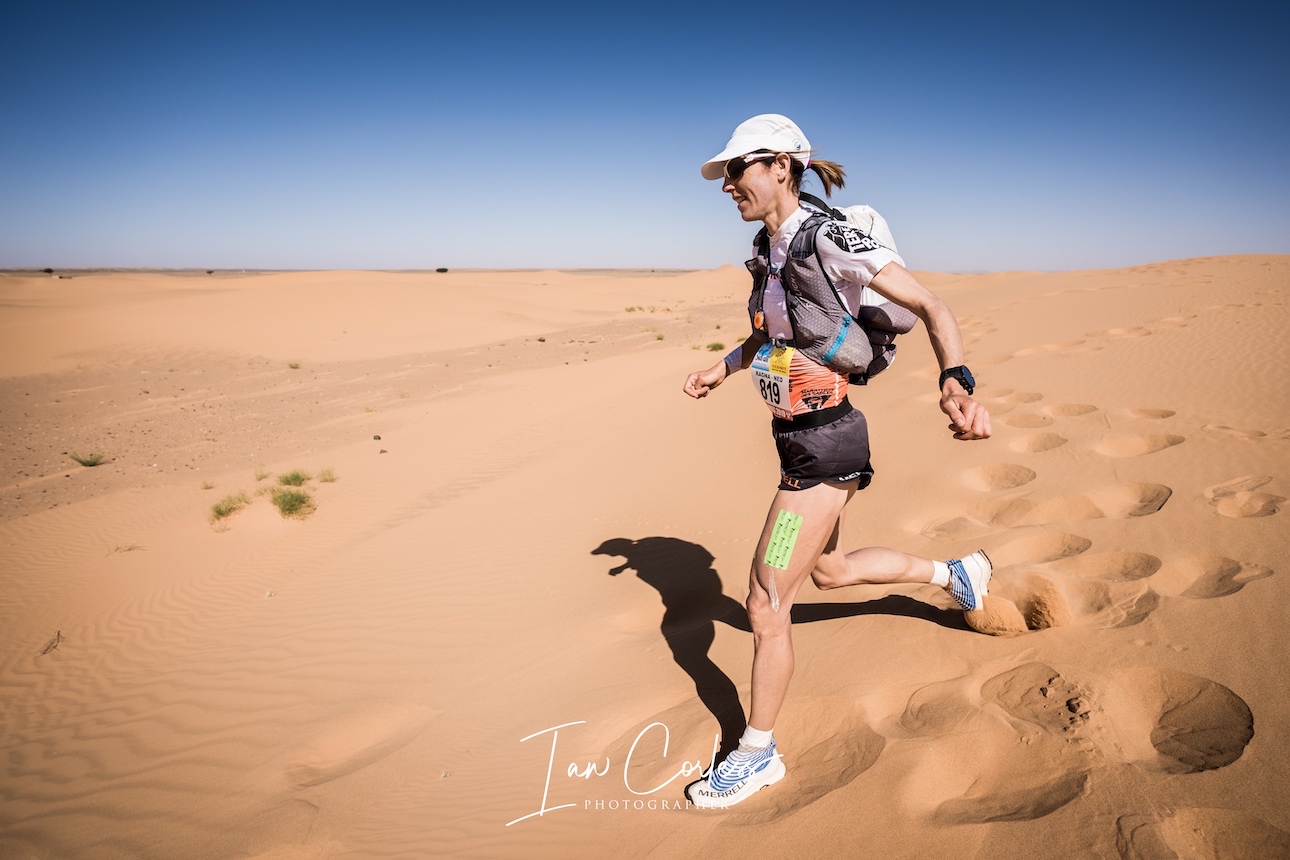
4 – BALANCED PACK
Not all multistage races are the same. The Coastal Challenge in Costa Rica, for example, is not self-sufficient so a runner only needs to carry liquid, snack food and any ‘mandatory’ kit. By contrast, a self-sufficient multistage race requires you to carry everything. A simple rule is keep everything as light as possible and keep your pack balanced. Luxuries really are luxuries in a race over multiple days so really ask yourself, do I need to take that? You will need mandatory kit as specified by the race and in addition you will need (as a guide):
- Sleeping bag
- Sleeping matt
- Warm layer
- Spare socks
- Food (minimum calories are specified per day)
Clothes, shoes, hat, sunglasses – but you will be wearing these so they don’t go in the pack.
That’s it. Keep it simple and if at all possible, get your pack with its contents as close the minimum weight as specified by the race.
By general consensus, a luxury item is considered a music player (or 2) such as an iPod shuffle.
Also remember that minimum pack weight will be without water, so, if your pack weighs 6.5kg, you will have to add 1.5kg on the start line on day 1. This is where a front pack or a pack where bottles sit on the front works really well. Bottles on the front help balance the front and the back and provide a greater running experience. Also, think about items your need whilst running… it’s not a good idea having them in the back, they need to be at the front so you can access them ‘on-the-go!’
Many packs are available to choose from and you will see two or three are very popular – WAA, Ultimate Direction and Raidlight. Choosing a pack is light choosing shoes; we are all personal. However, keep a pack simple, make sure it’s comfortable and make sure it has little or no bounce when running/ walking.
Consider joining a multistage/ multi-day training camp HERE
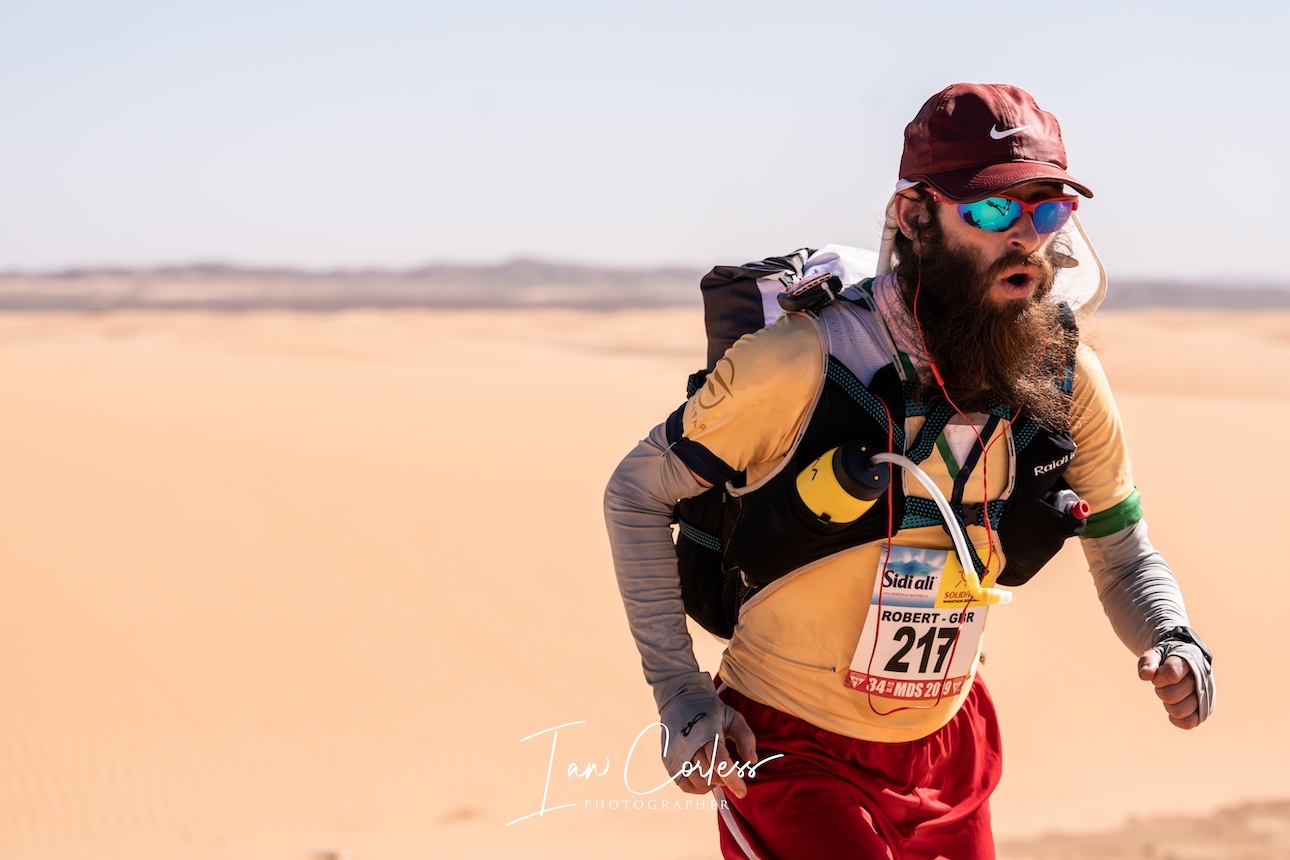
5 – PROTECT FROM THE SUN
The sun can be a killer in any race, single stage or multistage – use sun protection and apply it daily. Also use products like arm coolers, a hat and a buff. At aid stations or whilst racing, you can keep these wet which will help cool you. Particularly the buff. If you overheat, slow down and apply cold/ water to the back of the neck. Use UV protective clothing and the jury is out on if clothing should be tight or loose. This often comes down to personal preference.
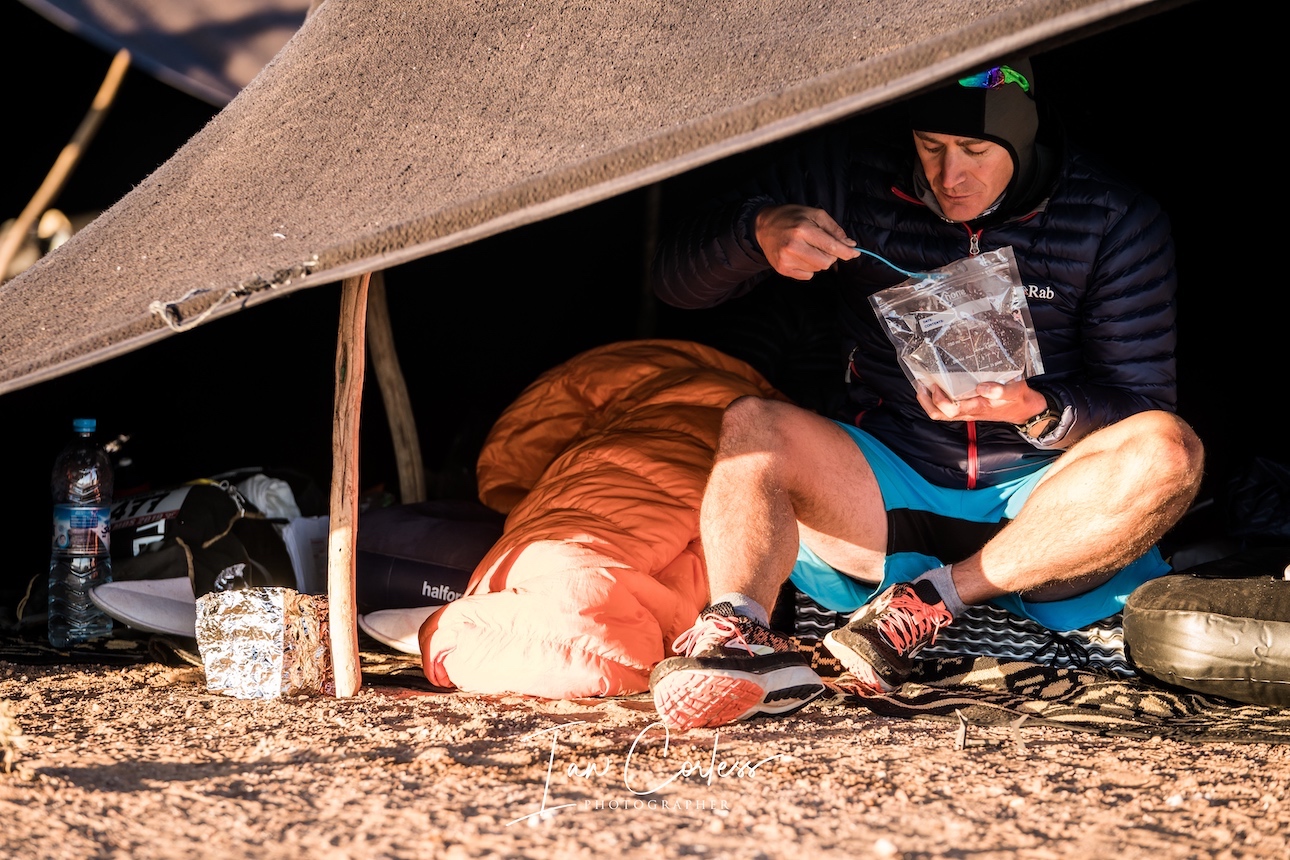
6 – EAT WELL
Any multistage race is quickly broken down into three phases – running, eating and sleeping. Food is a really important part of any race as it has to perform many functions. Most importantly, it has to sustain you so you will need carbohydrate, protein and fat. Individual requirements will vary but carbs will restore energy, protein will repair and fat is essential as this is one of the primary fuel sources for a multistage race. Remember though, our bodies have an unlimited reserve of fat. It’s important to understand that your diet whilst training may well be very different to when racing. In training you may well have eaten less carbs to teach your body to use fat, but when racing, you need to recover and be ready to run/race again the next day. Have variety in your food as your palette will change with fatigue, dehydration and heat. Real foods are good but dehydrated food also has a place. You also need to decide if you will require a stove for heating water? Don’t think twice about stepping up a little on the organization’s requisite minimum daily dose of 2,000 calories a day, remember though, it’s all weight!
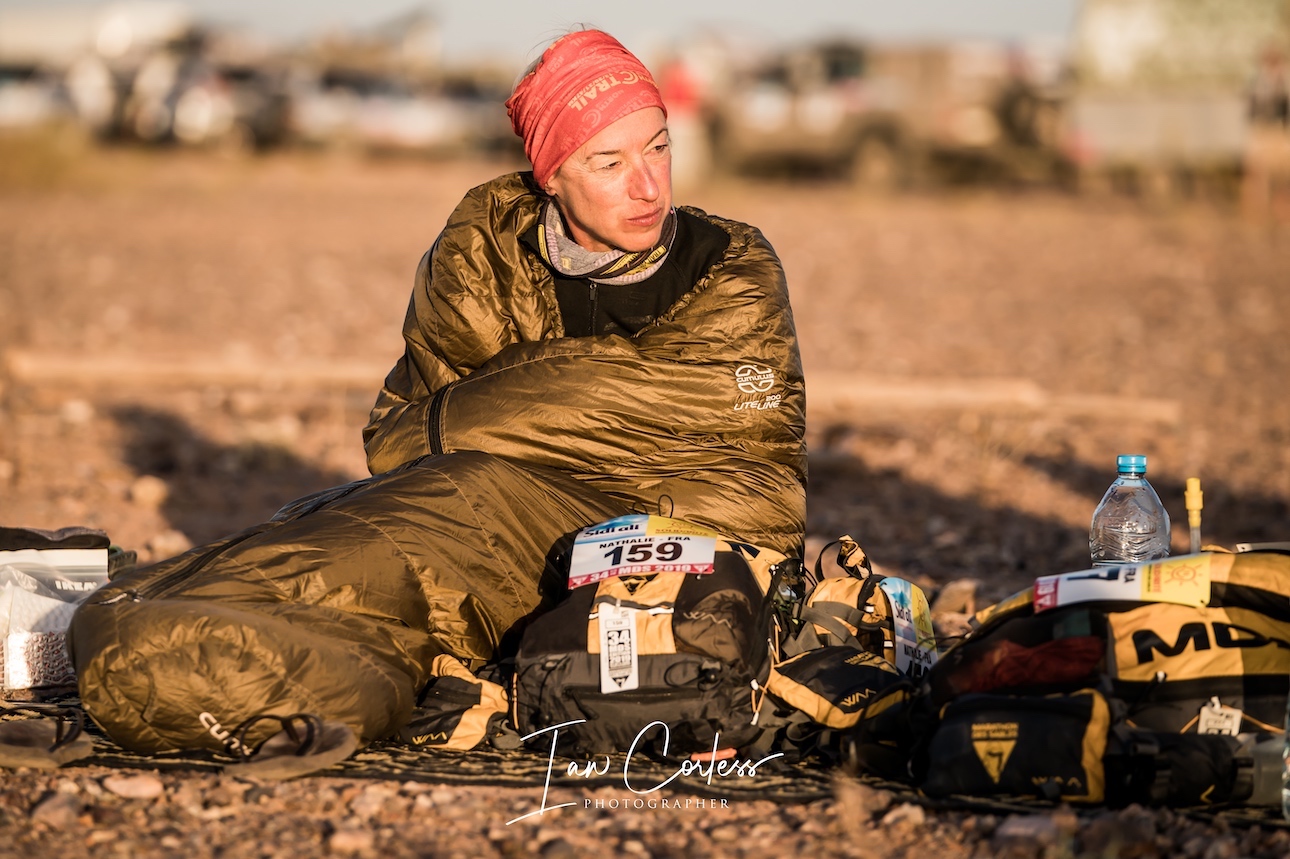
7 – REST
Rest is crucial and how much you get will depend on how fast you run. Front runners have no shortage of rest time, however, those at the back of the race get minimal rest. Make sure you have a good sleeping bag that is warm enough for you and is as light and packs small as possible. You can save weight by not carrying a sleeping matt – general consensus says that carrying one is worthwhile as sitting and sleeping is much more comfortable. Matts come in two types: inflatable or sold foam. Inflatable matts work really well, pack small but you run the risk of a puncture without diligence. Foam matts won’t puncture but they can be bulky.
Make sure you have a warm layer for comfort, temperatures drop with darkness. A jacket (usually down) will also allow you to add warmth while sleeping if required. A lightweight sleeping bag and down jacket is preferable (by general consensus) over a combination sleeping bag that turns into a jacket. A jacket and bag offers flexibility, weighs less and packs smaller but will be considerably more expensive.
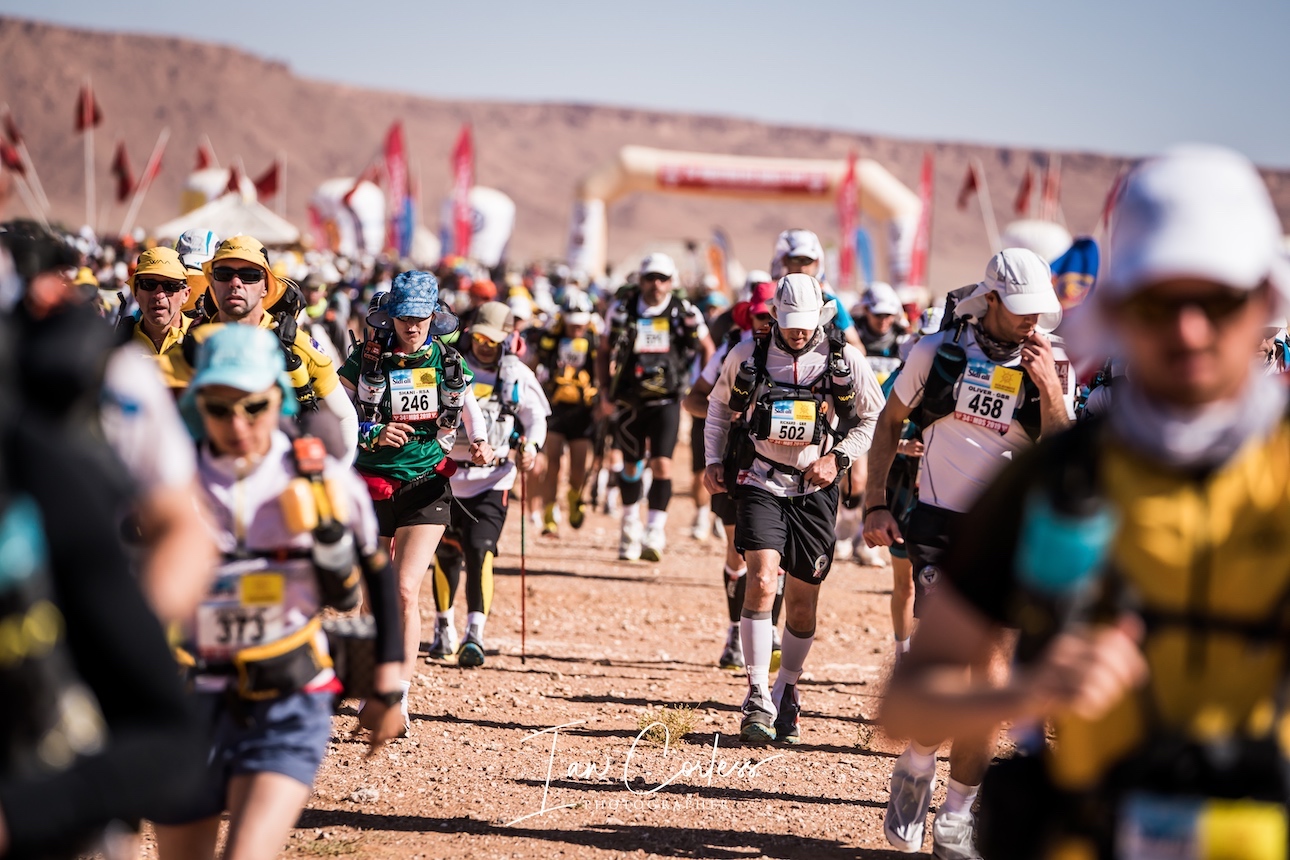
8 – PACE
Remember that you have entered a race that lasts multiple days. Spread your effort and have the big picture in mind – pace yourself. Don’t set off too quickly and consider race profiles, distances and cut-off times. YOU take responsibility of when you need to be at checkpoints. A day with a great deal of climbing, soft sand or technical train will take longer, allow for this and be prepared. Most multistage races have a long day and it’s fair to say it is the most feared day – keep some energy back for that day. Remember, the long day often has a generous time allowance so don’t be worried by taking a sleep break midway through.
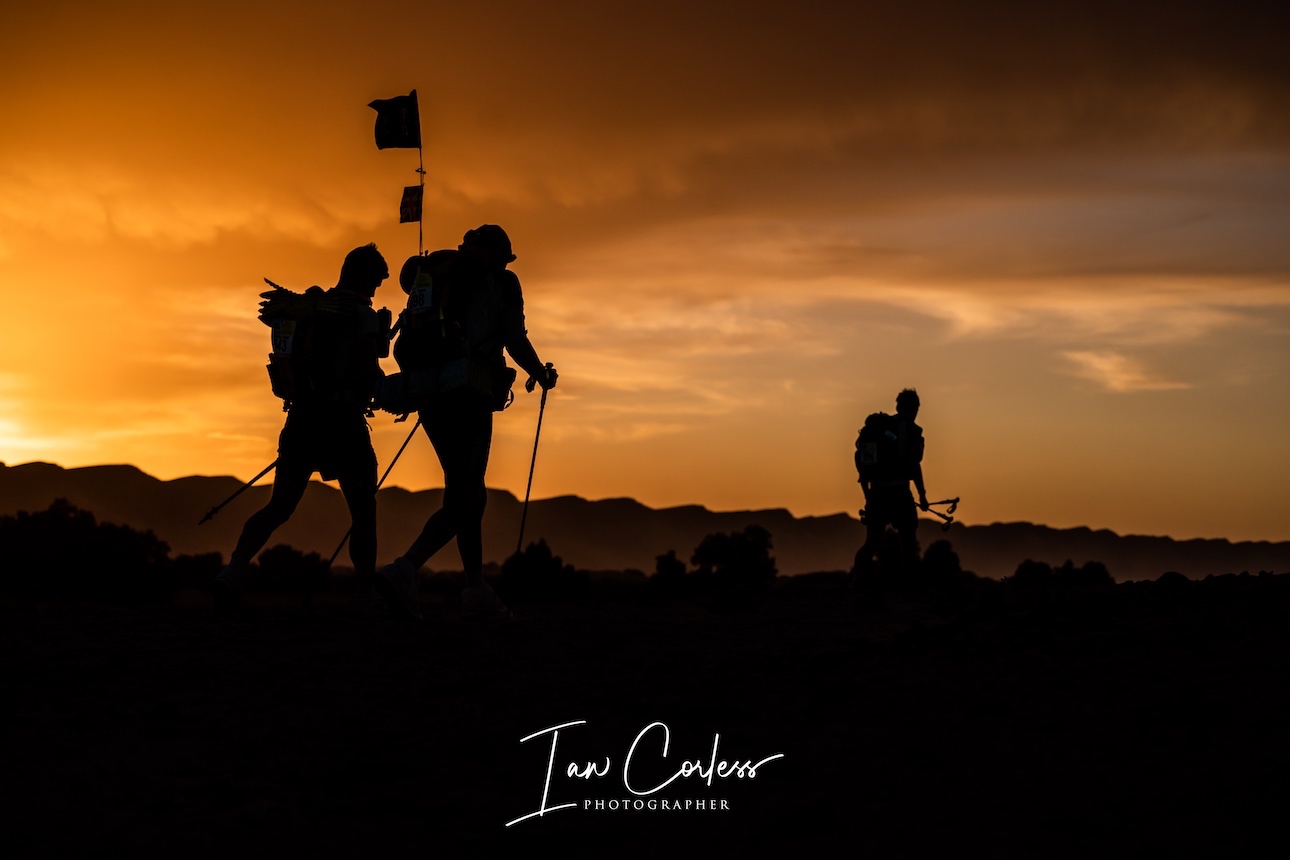
9 – KEEP ON TRACK
Most races will have markers for you to follow but be sensible and self-aware of the challenge. If a race requires you to carry a map and compass, then please understand how to use them. Carry a Spot Tracker for safety and if you use a GPS such as Suunto or Garmin, remember that these watches plot a route that you can use to backtrack. In a race like MDS it is difficult to go off course due to the volume of people, remember though that dunes are not way-marked and you will be given a bearing to run off. If you are alone or in the dark, an understanding of how this works is a positive.
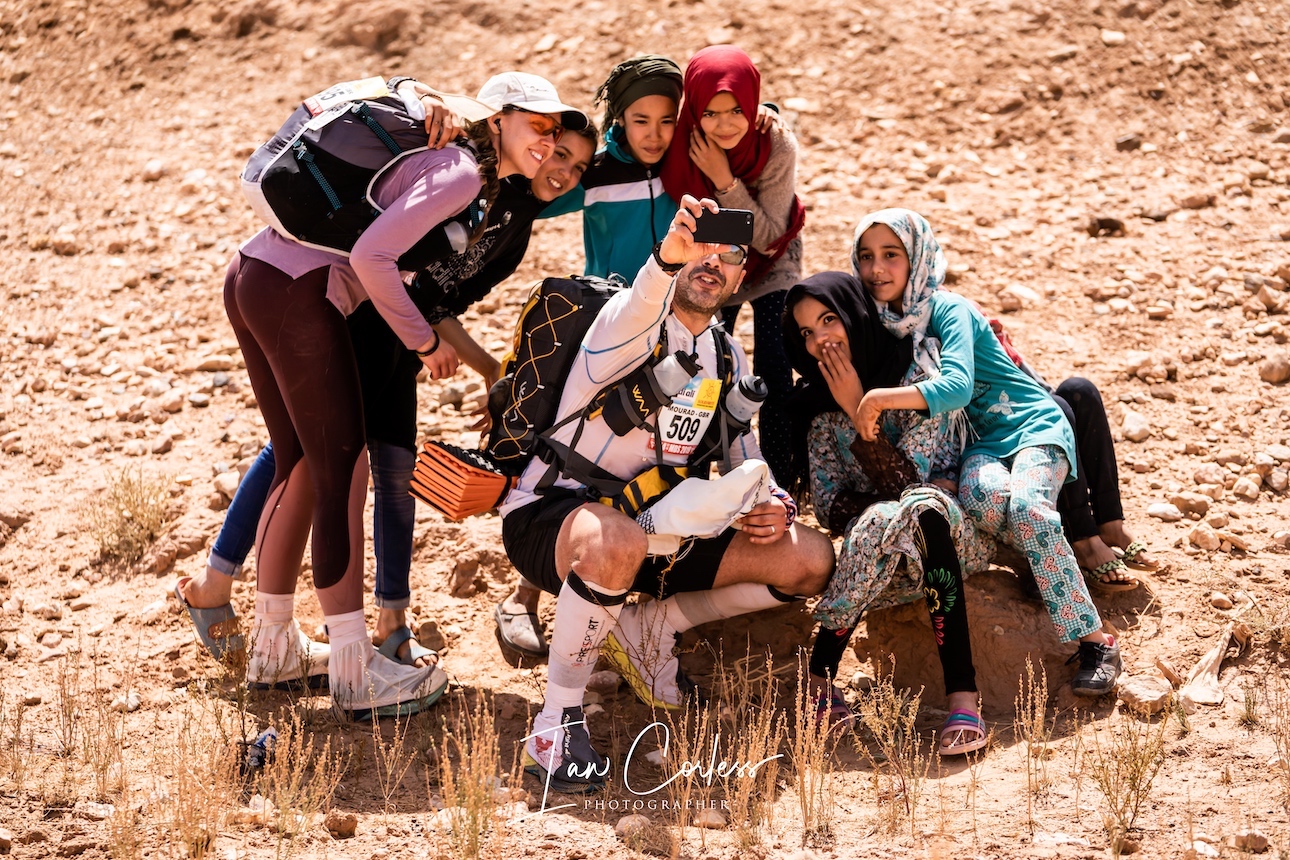
10 – ENJOY IT
A multistage journey often offers so much more than any single-day race. It’s an experience like no other and friends made in the desert, jungle or mountains will stay with you forever. Also remember that this journey is a hark back to a more primitive and simple time – embrace that. Leave gadgets at home and live a simple life for a week – I guarantee it will change you!
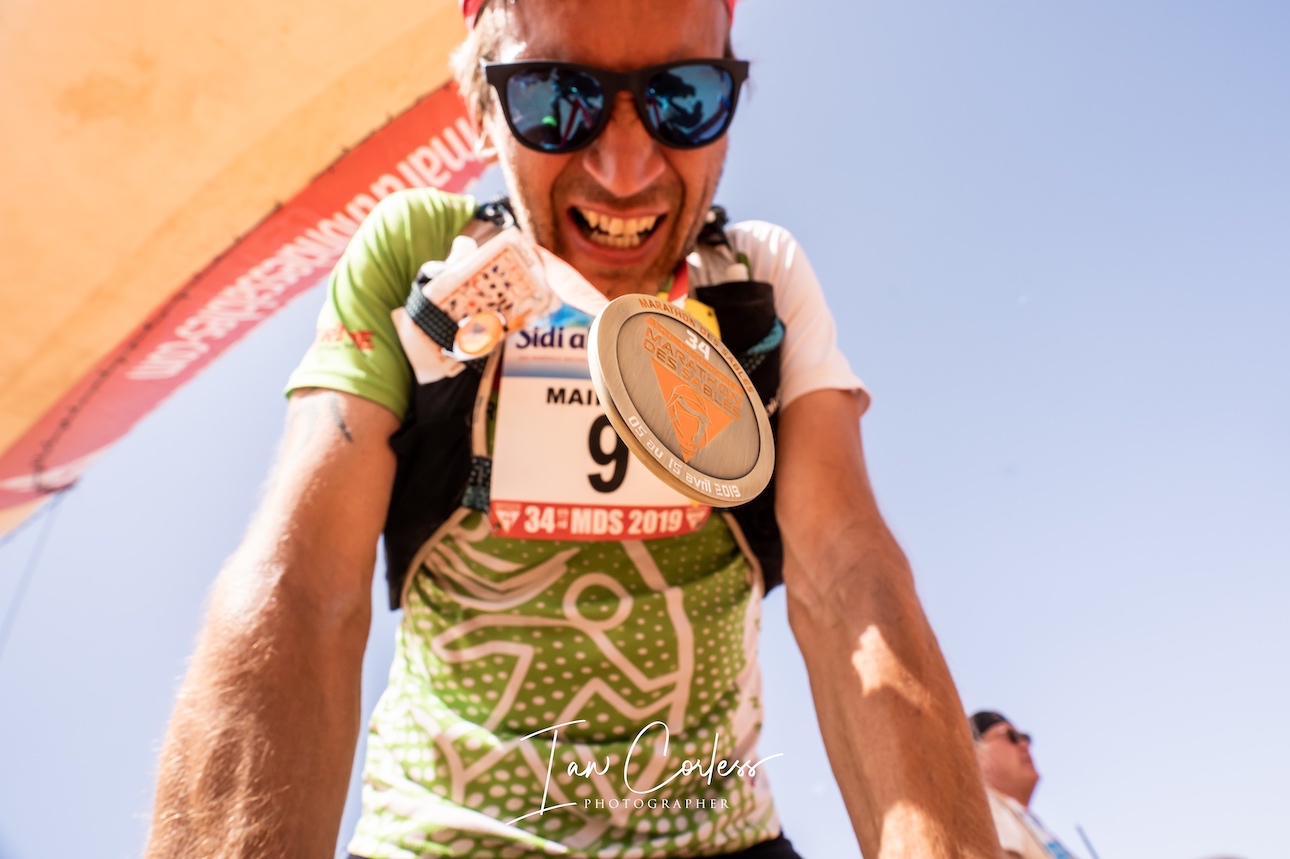
Please support this website. I believe everyone deserves to read quality, independent and factual articles – that’s why this website is open to all. Free press has never been so vital. I hope I can keep providing independent articles with your help. Any contribution, however big or small, is so valuable to help finance regular content. Please support me on Patreon HERE.


